School Highlights
SUNY Morrisville serves 1,983 students (81% of students are full-time).
The college's student:teacher ratio of 4:1 is lower than the state community college average of 13:1.
Minority enrollment is 44% of the student body (majority Black), which is less than the state average of 62%.
Quick Stats (2025)
- Enrollment: 1,983 students
- In-state tuition: $7,689
- Out-state tuition: $17,339
- Acceptance Rate: 81%
- Student:teacher ratio: 4:1
- Minority enrollment: 44%
- Source: Integrated Postsecondary Education Data System (IPEDS)
School Overview
The teacher population of 534 teachers has stayed relatively flat over five years.
SUNY Morrisville
(NY) Community College Avg.
Carnegie Classification
Baccalaureate/Associate's Colleges: Mixed Baccalaureate/Associate's
Baccalaureate/Associate's Colleges: Mixed Baccalaureate/Associate's
Institution Level
Four or more years
At least 2 but less than 4 years
Institution Control
Public
Private not-for-profit
Total Faculty
534 staff
158 staff
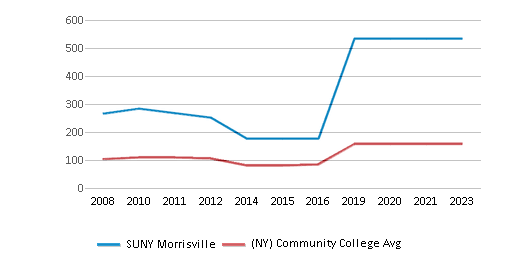
School Calendar
Student Body
The student population of SUNY Morrisville has declined by 28% over five years.
The student:teacher ratio of 4:1 has decreased from 5:1 over five years.
The SUNY Morrisville diversity score of 0.62 is less than the state average of 0.76. The school's diversity has stayed relatively flat over five years.
Total Enrollment
1,983 students
746 students
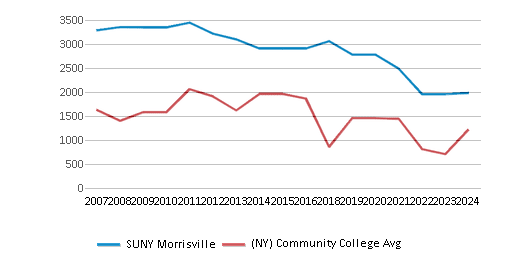
Student : Teacher Ratio
4:1
13:1
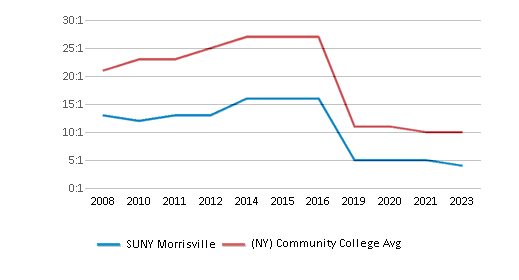
# Full-Time Students
1,598 students
519 students
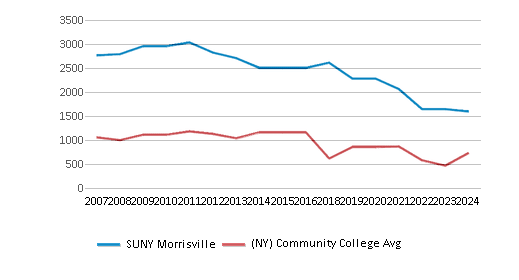
# Part-Time Students
385 students
514 students
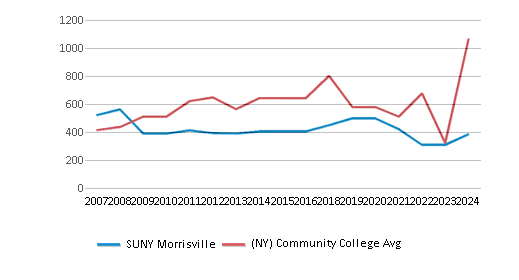
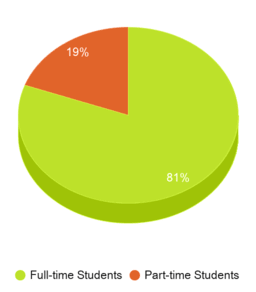
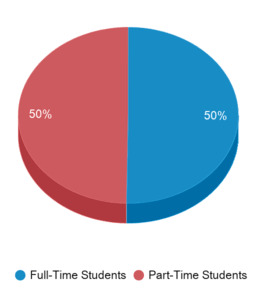
# Enrollment Undergraduate
198 students
357 students
# Full-Time Undergraduate Students
1,598 students
502 students
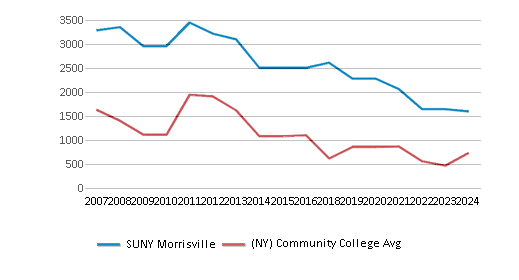
# Full-Time Graduate Students
n/a
44 students
# Part-Time Undergraduate Students
385 students
528 students
# Part-Time Graduate Students
n/a
41 students
Total Dormitory Capacity
1,400 students
382 students
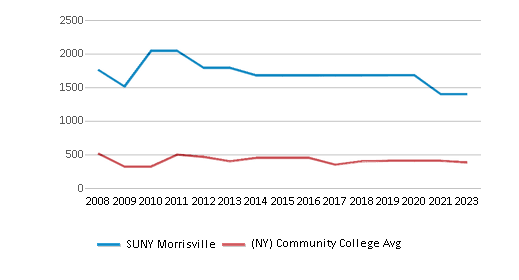
% American Indian/Alaskan
n/a
n/a
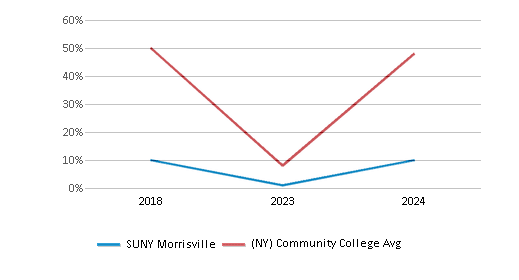
% Asian
1%
8%
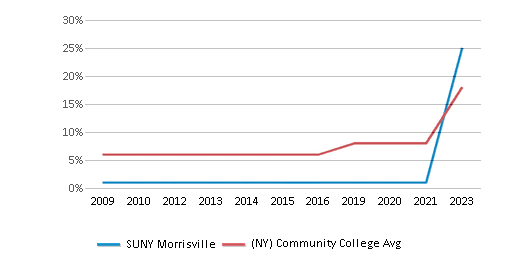
% Hispanic
10%
23%

% Black
23%
18%
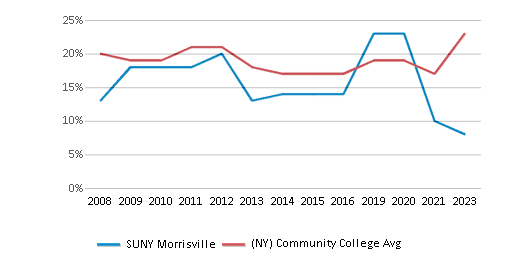
% White
56%
38%
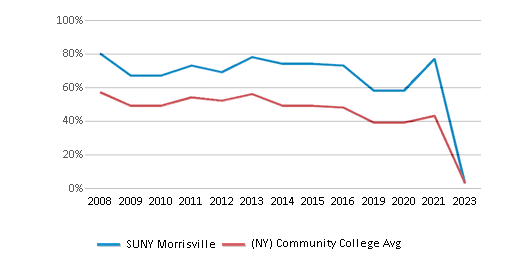
% Hawaiian
3%
2%
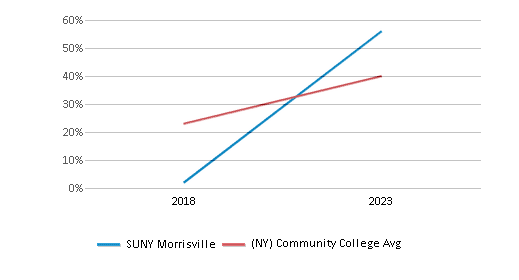
% Two or more races
3%
3%
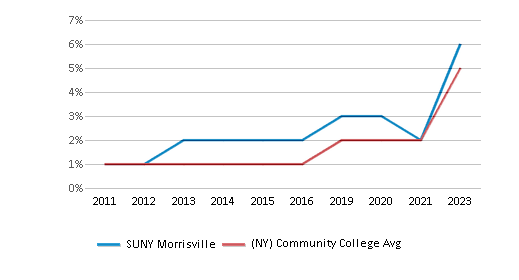
% Non Resident races
3%
3%
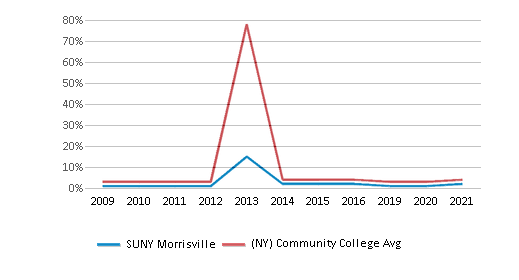
% Unknown races
1%
5%
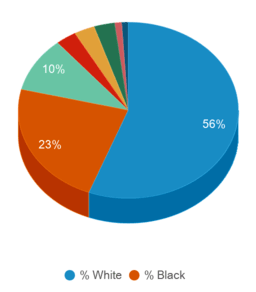
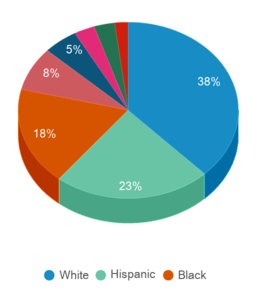
Diversity Score
0.62
0.76
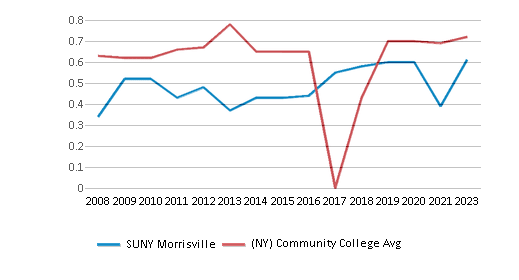
College Completion Rate (Students who graduate in less than 4 years)
n/a
0.3518%
College Completion Rate (Students who graduate in 4 years or more than 4 years)
0.3267%
0.3957%
Average Graduate Earnings (10 Years)
$34,900
$35,200
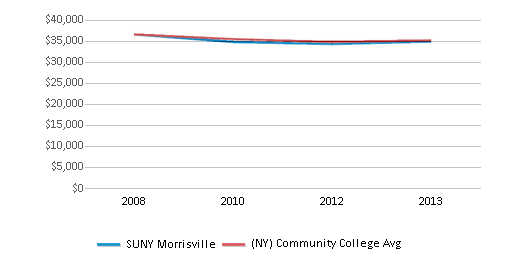
Tuition and Acceptance Rate
The public in-state tuition of $7,689 is more than the state average of $5,720. The in-state tuition has declined by 12% over four years.
The public out-state tuition of $17,339 is more than the state average of $10,320. The out-state tuition has declined by 7% over four years.
In-State Tuition Fees
$7,689
$5,720
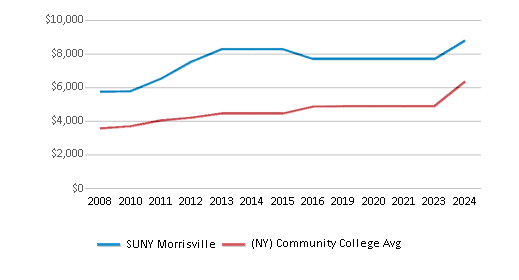
Out-State Tuition Fees
$17,339
$10,320
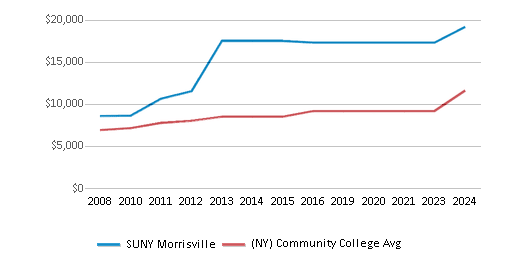
% Students Receiving Some Financial Aid
95%
88%
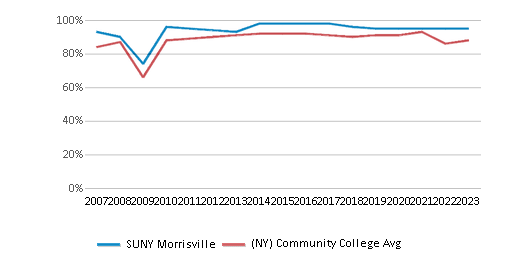
Median Debt for Graduates
$18,500
$13,841

Median Debt for Dropouts
$8,736
$5,500
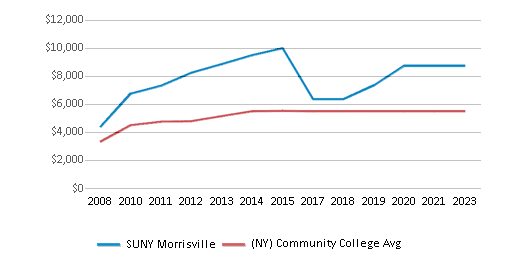
Acceptance Rate
81%
74%
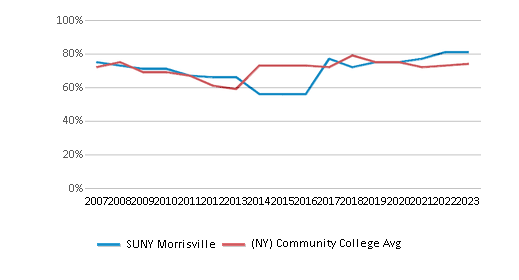
SAT Total Avg.
970
980
SAT Reading
475
475
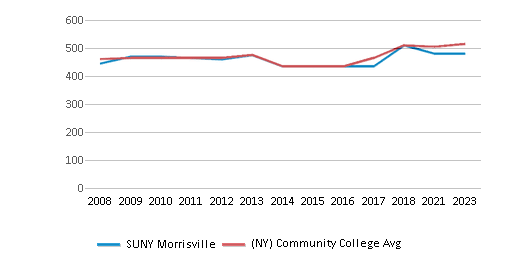
SAT Math
495
505
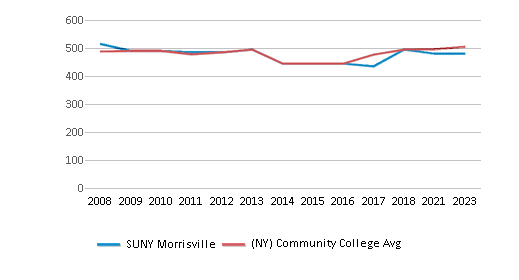
SAT Writing
410
410
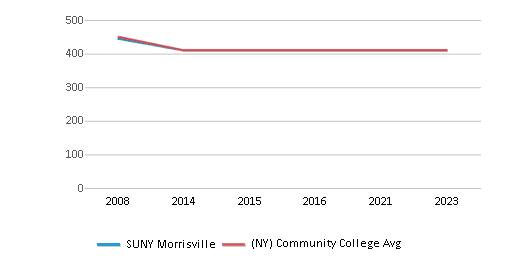
ACT Total Avg.
22
20
ACT Composite
22
20
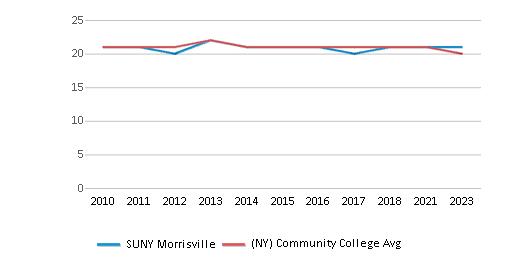
ACT English
19
19
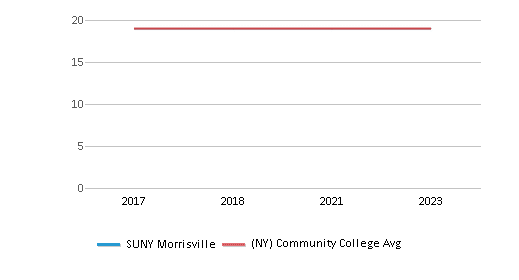
ACT Math
21
21
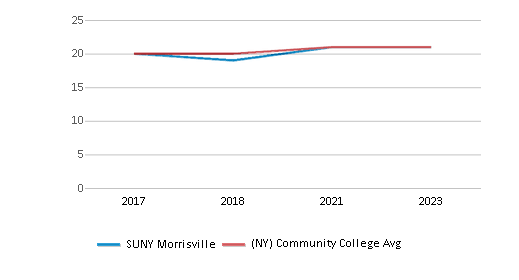
Source: 2024 (or latest year available) Integrated Postsecondary Education Data System (IPEDS)
Frequently Asked Questions
How much does SUNY Morrisville cost?
SUNY Morrisville's tuition is approximately $7,689 for In-State students and $17,339 for Out-State students.
What is the acceptance rate of SUNY Morrisville?
The acceptance rate of SUNY Morrisville is 81%, which is higher than the state average of 74%.
Recent Articles

Obtaining Your Bachelor's Degree at a Community College
Explore the evolving landscape of community colleges offering bachelor's degrees, addressing affordability, accessibility, and workforce needs.

A to Z of Community College Certificates and Courses
From business and healthcare to technology and skilled trades, the article showcases the breadth of options available to students seeking to enhance their knowledge, develop new skills, or pursue career advancement.

What is a Community College?
This comprehensive guide explains what a community college is, its history, and its role in higher education. It covers the types of programs offered, differences from four-year colleges, benefits of attending, and important considerations for prospective students, providing valuable insights for those exploring educational options.









